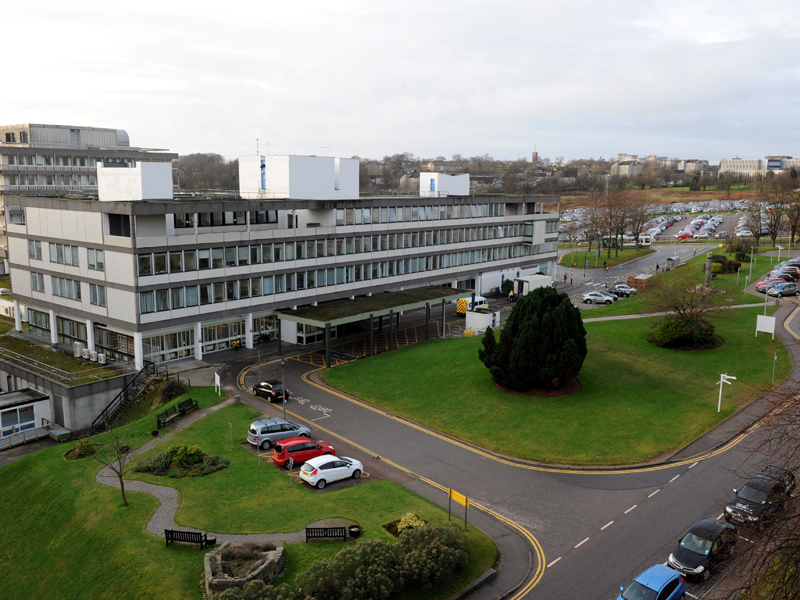The safety of elderly patients on wards at two north-east hospitals has been put at risk due to staffing shortages and poor management, an investigation has found.
Healthcare Improvement Scotland inspectors paid an announced five-day visit to Aberdeen Royal Infirmary (ARI) and Woodend Hospital last month as part of a wider review at NHS Grampian.
The investigation into hospital services for older people identified “weak” leadership and severe staffing problems which led to care being delivered in “extremely difficult circumstances”.
One dementia patient at Woodend, who had suffered multiple fractures after a fall, was forced to wait 65 hours before receiving full and proper treatment.
Staff were reported to have “little confidence” in senior management.
Inspectors have called for improvements in 22 areas after speaking to staff and patients, examining records and using questionnaires to gauge the opinions of patients’ families.
It was noted that the standard of care provided at ARI was only possible because staff were “repeatedly covering gaps in the system”.
A report from the inspectors expressed concern about the “sustainability of safe patient care and the impact on staff wellbeing”.
Staff worked long hours and rarely took breaks, while important paperwork was often not filled out properly which meant inspectors could not be assured that appropriate care was given to patients.
The report, which focused on care delivered at a range of different wards, said the medical leadership must regain the confidence of workers by addressing staffing, motivation, patient flow and capacity.
Overall, patients were found to be complimentary about the care and assistance they received, however.
Staff were described as “magnificent” and “marvellous”.
The inspectors concluded that the management of patient flow and capacity at the two hospitals was “not fit for purpose and puts patient safety at risk”.
They claimed they witnessed people being described by staff as decants – a term to describe when a patient is moved from one ward to another – which not “dignified or respectful”.
Inspectors found that elective patients at ARI can wait a long time for a bed – generally up to eight hours – but they observed one person who spent 10 hours in the emergency department on a trolley then a chair before being moved to a ward.
“Staff told us that wards are continually short staffed,” it stated.
“Due to a lack of staff, ward staff were under pressure and being asked to deliver care in extremely difficult circumstances.
“To maintain a safe service, staff regularly work more than their contracted hours.
“When on duty, they are unable to leave the ward for breaks.”
Inspectors said several staff told them they were confident they gave patients good levels of fundamental care but they admitted “they cannot always deliver the quality of care they would like due to staffing shortages”.
The report said: “The significant issues identified during our visit have led us to believe that the senior nursing and medical leadership is weak, and has led to staff having little confidence in their leadership.”
